Posted on July 19th, 2010 by ASEE
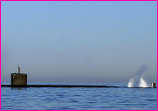 This lesson helps students understand how a submarine controls its buoyancy through the use of ballasts. Students construct a model ballast system, and then learn to control its vent valves to make it submerge and surface.
This lesson helps students understand how a submarine controls its buoyancy through the use of ballasts. Students construct a model ballast system, and then learn to control its vent valves to make it submerge and surface.
Read More
Filed under: Grades 6-8, Grades 9-12, Lesson Plans | 1 Comment »
Tags: Grade 7-12, Lesson Plan, Marine engineering, Nautical Engineering, Ocean, Underwater Robot
Posted on July 5th, 2010 by ASEE
 The egg drop is a fun and dramatic way to get students involved in engineering design. After a discussion of safety features, students experiment packaging an egg to produce a design that will allow it to fall from a considerable height without cracking.
The egg drop is a fun and dramatic way to get students involved in engineering design. After a discussion of safety features, students experiment packaging an egg to produce a design that will allow it to fall from a considerable height without cracking.
Read More
Filed under: Grades 6-8, Grades 9-12, Lesson Plans | 2 Comments »
Tags: Engineering Design, Grades 5-12, Lesson Plan, Packaging Engineering, Physical Science, Physics, Safety engineering
Posted on June 7th, 2010 by ASEE
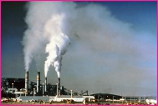 In this lesson from the California Academy of Sciences, students study the effects of pollution upon human health and consider how we can protect ourselves from the effects of carginogens. They build a lung model to learn how their lungs and diaphragm work to make them breathe. The lesson features a demonstration on how incomplete combustion of fossil fuels releases particles into the air that can harm humans.
In this lesson from the California Academy of Sciences, students study the effects of pollution upon human health and consider how we can protect ourselves from the effects of carginogens. They build a lung model to learn how their lungs and diaphragm work to make them breathe. The lesson features a demonstration on how incomplete combustion of fossil fuels releases particles into the air that can harm humans.
Read More
Filed under: Grades 6-8, Grades 9-12, Lesson Plans | Comments Off on Lesson: Pollution and Lung Health
Tags: Environmental science, Human Body, Pollution
Posted on May 10th, 2010 by ASEE
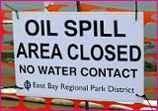 In this lesson, students in grades 3-12 work in teams to analyze an “oil spill” in the classroom, then design, build, and test a system to first contain, and then remove the oil from the water. Students select from everyday items to build their oil containment and clean-up systems, evaluate the effectiveness of their solution and those of other teams, and present their findings to the class.
In this lesson, students in grades 3-12 work in teams to analyze an “oil spill” in the classroom, then design, build, and test a system to first contain, and then remove the oil from the water. Students select from everyday items to build their oil containment and clean-up systems, evaluate the effectiveness of their solution and those of other teams, and present their findings to the class.
Read More
Filed under: Grades 6-8, Grades 9-12, Grades K-5, Lesson Plans | 3 Comments »
Tags: Energy and Environmental Technology, Environmental Engineering, Environmental science, Grades 3-12, Ocean
Posted on April 19th, 2010 by ASEE
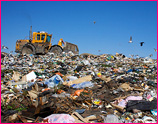 What happens to garbage? In this lesson, students grades 9-12 derive the answer by building their own landfill. While observing how household waste can leach into soil and groundwater, they also learn the importance of well supervised, sanitary disposal sites.
What happens to garbage? In this lesson, students grades 9-12 derive the answer by building their own landfill. While observing how household waste can leach into soil and groundwater, they also learn the importance of well supervised, sanitary disposal sites.
Read More
Filed under: Grades 9-12, Lesson Plans | 2 Comments »
Tags: Clean Water, Environmental Engineering, Environmental Protection Agency, Environmental science, Grades 9-12, Lesson Plan, Waste management
Posted on April 12th, 2010 by ASEE
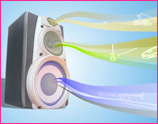 In this activity, students determine the path traveled by sound waves as they reflect from room surfaces and the time it takes to travel each path. Assuming the role of acoustic engineers, students gain an overview of sound mechanics that involves rate calculations, working with number systems, and a bit of geometry.
In this activity, students determine the path traveled by sound waves as they reflect from room surfaces and the time it takes to travel each path. Assuming the role of acoustic engineers, students gain an overview of sound mechanics that involves rate calculations, working with number systems, and a bit of geometry.
Read More
Filed under: Grades 6-8, Grades 9-12, Lesson Plans | 3 Comments »
Tags: Audio engineering, Music engineering
Posted on April 5th, 2010 by ASEE
 Who hasn’t been frustrated by hard-to-open, clumsy containers?
Who hasn’t been frustrated by hard-to-open, clumsy containers?
Assuming the role of engineers, students learn about the design process and examine the packaging of everyday products. They then analyze a specific product and devise a better design, producing a written report that recommends helpful changes.
Read More
Filed under: Grades 6-8, Grades 9-12, Lesson Plans | 1 Comment »
Tags: Design, Engineering Design Process, Industrial engineering, package design
Posted on March 29th, 2010 by Jaimie Schock
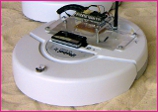 The Learning Roomba educational toolkit attempts to address robotics usability issues by keeping total costs down while making the tools as easy to use as possible. This toolkit is a collection of resources and tools to facilitate teaching robotics to pre-college students. Through these resources, students can learn about science, math, and engineering topics in a fun and exciting way.
The Learning Roomba educational toolkit attempts to address robotics usability issues by keeping total costs down while making the tools as easy to use as possible. This toolkit is a collection of resources and tools to facilitate teaching robotics to pre-college students. Through these resources, students can learn about science, math, and engineering topics in a fun and exciting way.
Read More
Filed under: Class Activities, Grades 6-8, Grades 6-8, Grades 9-12, Grades 9-12, Lesson Plans | Comments Off on Curriculum: Learning Roomba
Tags: Building robots, Class Activities, Curriculum, Lesson Plan, Robotics, Technology for Learning
Posted on March 8th, 2010 by ASEE
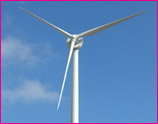 This lesson plan from PBS helps students discover the basics of wind power technology in having them build and refine a wind turbine. Students examine the concept of renewable energy, identify the benefits and drawbacks of wind power, and compare its costs and impact on the environment with other energy sources.
This lesson plan from PBS helps students discover the basics of wind power technology in having them build and refine a wind turbine. Students examine the concept of renewable energy, identify the benefits and drawbacks of wind power, and compare its costs and impact on the environment with other energy sources.
Read More
Filed under: Class Activities, Grades 9-12, Grades 9-12, Lesson Plans | 2 Comments »
Tags: Mechanical engineering, Wind Technology, Wind Turbine
 This lesson helps students understand how a submarine controls its buoyancy through the use of ballasts. Students construct a model ballast system, and then learn to control its vent valves to make it submerge and surface.
This lesson helps students understand how a submarine controls its buoyancy through the use of ballasts. Students construct a model ballast system, and then learn to control its vent valves to make it submerge and surface.








 The egg drop is a fun and dramatic way to get students involved in engineering design. After a discussion of safety features, students experiment packaging an egg to produce a design that will allow it to fall from a considerable height without cracking.
The egg drop is a fun and dramatic way to get students involved in engineering design. After a discussion of safety features, students experiment packaging an egg to produce a design that will allow it to fall from a considerable height without cracking. In this lesson from the California Academy of Sciences, students study the effects of pollution upon human health and consider how we can protect ourselves from the effects of carginogens. They build a lung model to learn how their lungs and diaphragm work to make them breathe. The lesson features a demonstration on how incomplete combustion of fossil fuels releases particles into the air that can harm humans.
In this lesson from the California Academy of Sciences, students study the effects of pollution upon human health and consider how we can protect ourselves from the effects of carginogens. They build a lung model to learn how their lungs and diaphragm work to make them breathe. The lesson features a demonstration on how incomplete combustion of fossil fuels releases particles into the air that can harm humans. In this lesson, students in grades 3-12 work in teams to analyze an “oil spill” in the classroom, then design, build, and test a system to first contain, and then remove the oil from the water. Students select from everyday items to build their oil containment and clean-up systems, evaluate the effectiveness of their solution and those of other teams, and present their findings to the class.
In this lesson, students in grades 3-12 work in teams to analyze an “oil spill” in the classroom, then design, build, and test a system to first contain, and then remove the oil from the water. Students select from everyday items to build their oil containment and clean-up systems, evaluate the effectiveness of their solution and those of other teams, and present their findings to the class. What happens to garbage? In this lesson, students grades 9-12 derive the answer by building their own landfill. While observing how household waste can leach into soil and groundwater, they also learn the importance of well supervised, sanitary disposal sites.
What happens to garbage? In this lesson, students grades 9-12 derive the answer by building their own landfill. While observing how household waste can leach into soil and groundwater, they also learn the importance of well supervised, sanitary disposal sites. In this activity, students determine the path traveled by sound waves as they reflect from room surfaces and the time it takes to travel each path. Assuming the role of acoustic engineers, students gain an overview of sound mechanics that involves rate calculations, working with number systems, and a bit of geometry.
In this activity, students determine the path traveled by sound waves as they reflect from room surfaces and the time it takes to travel each path. Assuming the role of acoustic engineers, students gain an overview of sound mechanics that involves rate calculations, working with number systems, and a bit of geometry. Who hasn’t been frustrated by hard-to-open, clumsy containers?
Who hasn’t been frustrated by hard-to-open, clumsy containers? The Learning Roomba educational toolkit attempts to address robotics usability issues by keeping total costs down while making the tools as easy to use as possible. This toolkit is a collection of resources and tools to facilitate teaching robotics to pre-college students. Through these resources, students can learn about science, math, and engineering topics in a fun and exciting way.
The Learning Roomba educational toolkit attempts to address robotics usability issues by keeping total costs down while making the tools as easy to use as possible. This toolkit is a collection of resources and tools to facilitate teaching robotics to pre-college students. Through these resources, students can learn about science, math, and engineering topics in a fun and exciting way. This lesson plan from PBS helps students discover the basics of wind power technology in having them build and refine a wind turbine. Students examine the concept of renewable energy, identify the benefits and drawbacks of wind power, and compare its costs and impact on the environment with other energy sources.
This lesson plan from PBS helps students discover the basics of wind power technology in having them build and refine a wind turbine. Students examine the concept of renewable energy, identify the benefits and drawbacks of wind power, and compare its costs and impact on the environment with other energy sources.